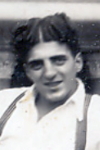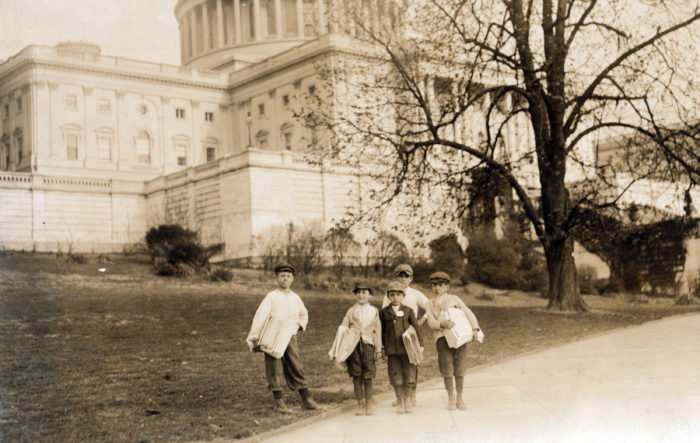
Over the last two weeks, I have looked at a long-gone alley in NE Washington, Schott’s Alley. While the press at the time was almost uniformly negative, the longer piece by Pauline Pry was particularly dour, to the point that it seemed that the author had some kind of ax to grind.
A very different view of Schott’s Alley can be found in an Overbeck History Project interview conducted in 2004. The subject was Tony Ambrosi, who grew up in the alley, having moved there shortly after his birth in 1911. He starts by mentioning that the alley was known variously as “Schott’s Alley, or Schott’s Place or Schott’s Court.” Contemporary newspapers bear him out, as there was a push to rename it from an ‘alley’ to a ‘place’ in 1920, apparently because the connotations of alley were generally negative. Ambrosi (pictured above in a picture that was included in the interview) then continues on:
whatever you term it, was a Shangri-La to us. The Shangri-La of Northeast Washington. I would say the Shangri-La of Washington, D.C., because we were in an enclosed area all to ourselves. We could play, do this, do that, whatever.
He then describes the alley surface itself: Belgian block, which he describes as a paver made out of asphalt, though the usual use of this word is a roughly hewn, rectangular piece of granite – certainly different from the bricks usually seen in D.C. alleys today. Whatever the exact substance, it was the perfect surface for them: “We played baseball in the street there as kids, soccer ball and football.”

He then describes his interaction with the most visible landmark near the alley: The Senate Office building:
Yes, it was a three sided, it was the three-sided building, wide open on the east side and that’s where we went because we had the entrance on First Street and we would just go down the Alley, Court or Place, we would just go down and go right in the into the open of the Russell Building, you call it now, Senate Office Building, we termed it then. The Senate office building used to be wonderful skating on the corner of First and B Street, now known as Constitution Avenue, because they had marble steps there and we used to love to ride on the first two steps because they were so smooth with the skates.
Ambrosi also mentions that he was baptized at St. Joseph’s Church, just up the street from his home. While he did not attend the school attached to the church, it seems that the students enjoyed the same things he did, including the local drug store and running wild in the Senate Office Building.
In short, this was not at all the dangerous place described by Pauline Pry. It must be stated that some 20 years separate the two stories, but it seems unlikely that the alley would have experienced such a dramatic shift in the intervening time.
